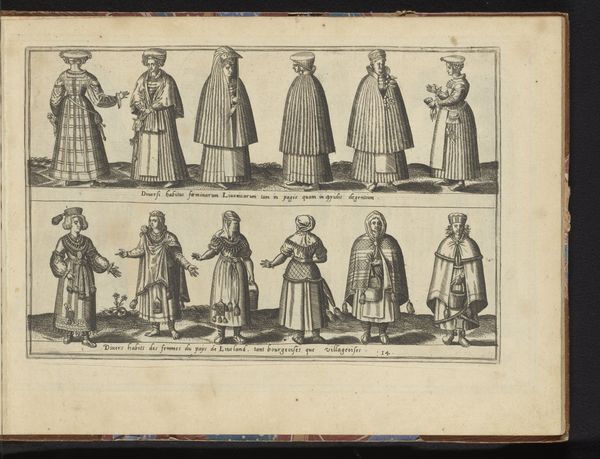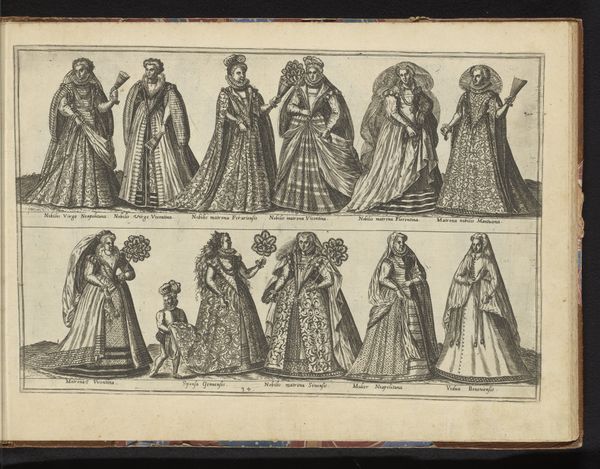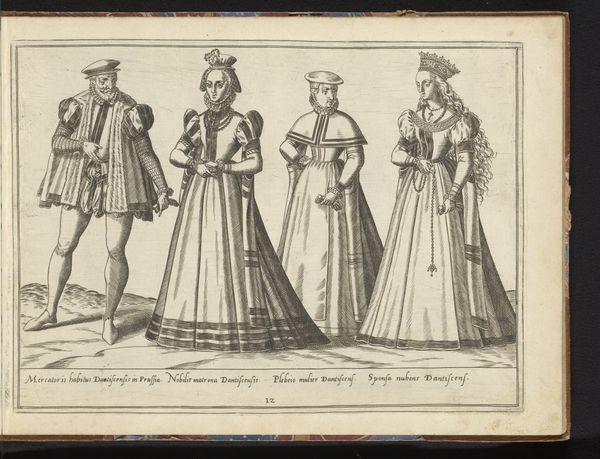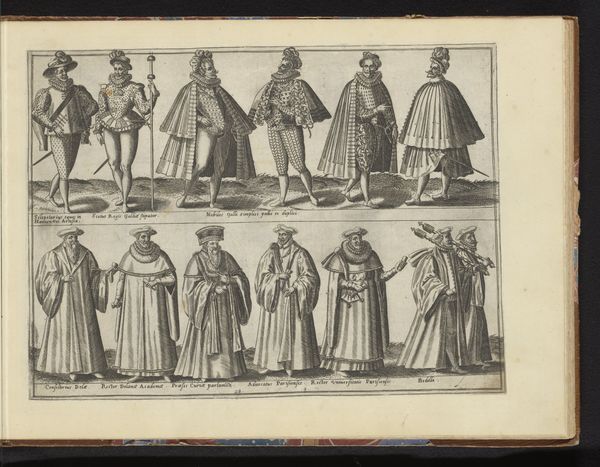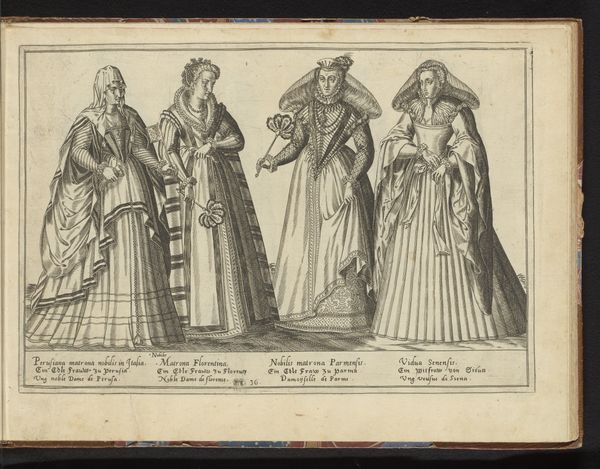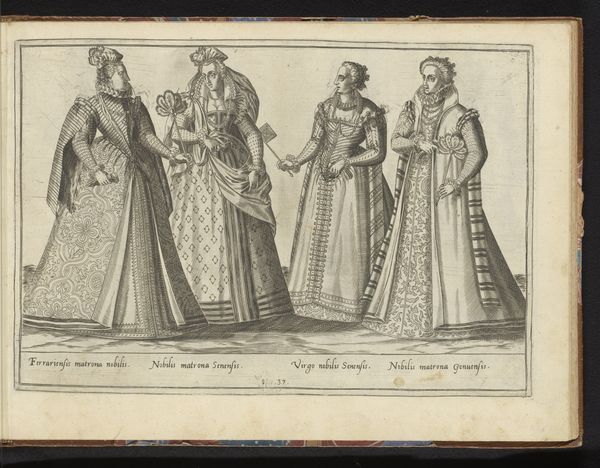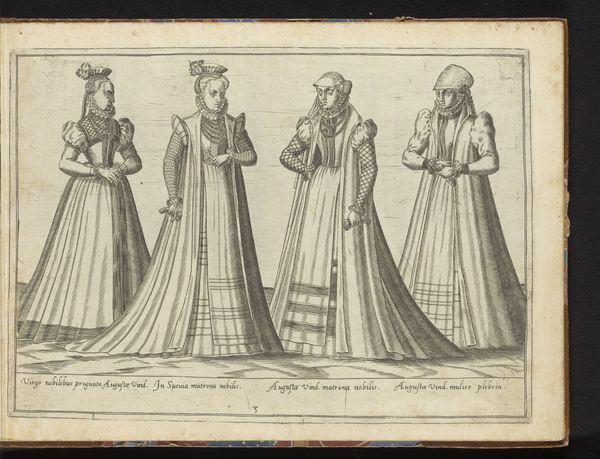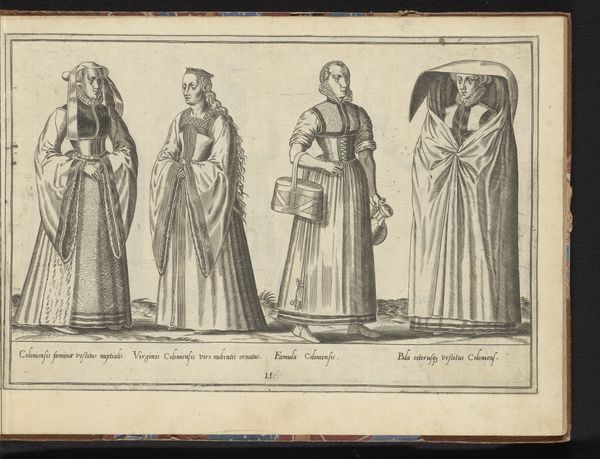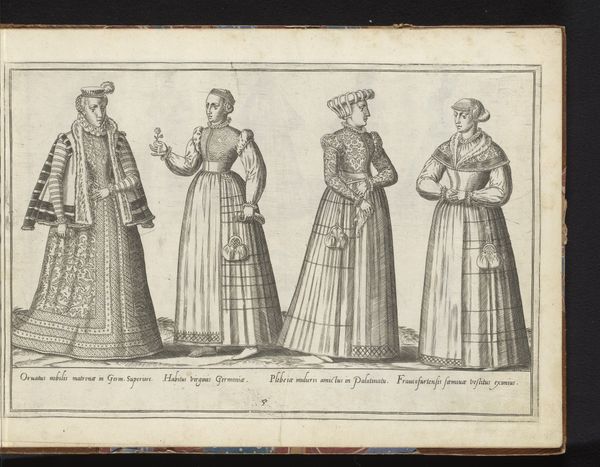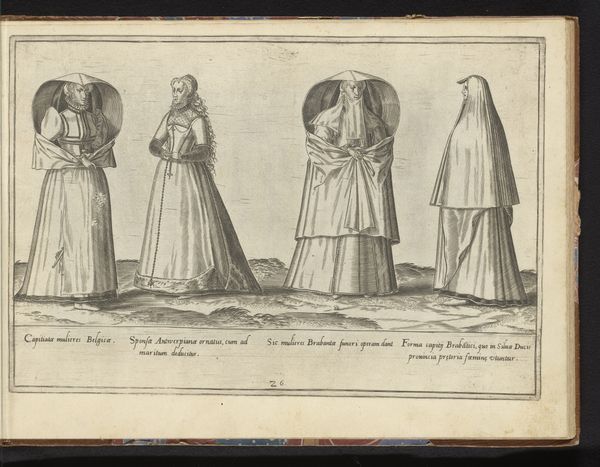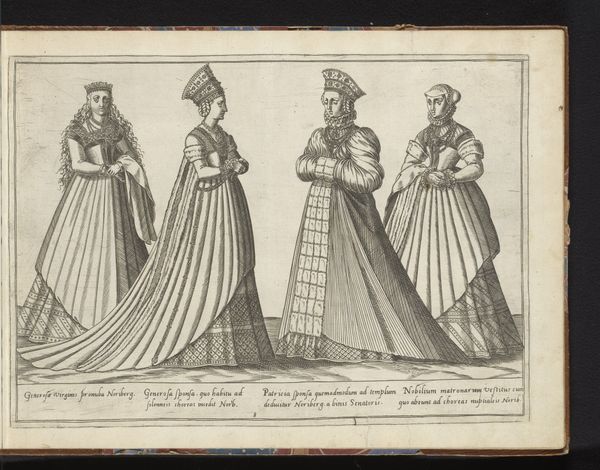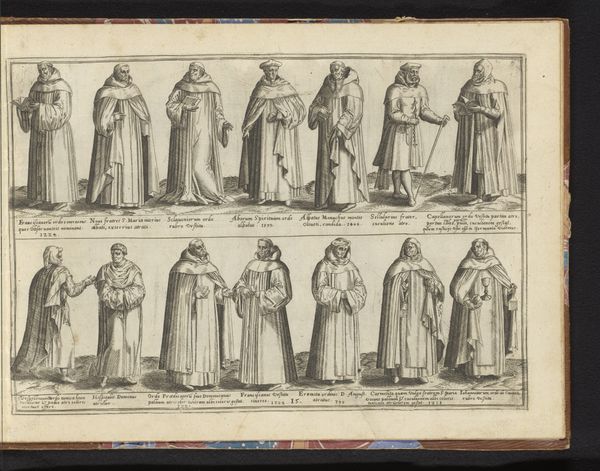
Vrouwen en mannen van verschillende standen, gekleed volgens de mode in Duitsland, ca. 1580 1581
0:00
0:00
print, etching
#
portrait
# print
#
etching
#
mannerism
#
figuration
#
genre-painting
#
history-painting
Dimensions: height 265 mm, width 360 mm
Copyright: Rijks Museum: Open Domain
Curator: This etching by Abraham de Bruyn, made around 1581, is titled "Vrouwen en mannen van verschillende standen, gekleed volgens de mode in Duitsland, ca. 1580"—"Women and men of different social classes, dressed according to the fashion in Germany, around 1580". It's quite a fascinating glimpse into society, isn't it? Editor: It is! At first glance, I see a meticulous focus on detailing fabrics and garments. You can almost feel the weight of those woolens and linens; they speak volumes about the wearers’ status, don’t they? Curator: Absolutely. De Bruyn was capturing a visual inventory of social strata. Fashion in the late 16th century was strictly regulated. It was literally clothing as a marker of power and societal position. Look at how much attention is paid to the sumptuary laws represented in this work. Editor: Indeed. It’s more than mere vanity; the textiles and cut declare one's identity and maybe even one’s profession, particularly with the tools in the women’s hands in the lower register. Considering this is an etching, the means of production were also tightly linked to print culture and broader patterns of consumption. How was this image used, I wonder? Curator: Prints like this served various purposes. Certainly documentation. Also circulation and perhaps social climbing. Being ‘in the know’ regarding fashion meant demonstrating wealth and status, so circulating images was important to those goals. Editor: These weren’t mass produced in the way we understand printmaking now, though. The labor involved – the artist's hand meticulously etching – reinforces that this wasn’t intended for the masses, correct? Curator: That’s an important point. These images catered to a specific clientele. A social and intellectual elite interested in appearances. Also, don’t you think that the theatrical compositions are evocative of the Mannerist style that permeated artistic circles? Editor: It's hard to miss that artifice. And considering the precise techniques and emphasis on status conveyed, "Vrouwen en mannen van verschillende standen…" provides a starkly textured illustration, not just of clothing, but of the complex dynamics of the era. Curator: A tangible representation of how appearances and dress mirrored rigid social stratifications. This piece really provokes interesting questions about history and representation. Editor: I agree completely. Thinking about the labour, materials and what this object meant in a time and place is endlessly rewarding.
Comments
No comments
Be the first to comment and join the conversation on the ultimate creative platform.
